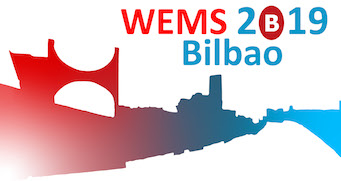Conveners
Oxides - Results: -1
- Petko Krastev (University of Sofia (BG))
Oxides - Results: -2
- Iraultza Unzueta Solozabal (Universidad del País Vasco / Euskal Herriko Unibertsitatea (ES))
The integration of ferromagnetic thin films (FM) with the classes of two dimensional (2D) transition metal dichalcogenides (TMD) and topological insulators (TI) constitutes a very promising route to build-up the next generation of spintronic devices [1]. In particular, the use of TMD and TI can boost the efficiency of the spin orbit torque exerted to an adjacent FM layer, by taking advantage...
Among transition-metal oxides, the Molybdenum oxide compounds are particularly attractive due to the structural (2D) anisotropy and to the ability of the molybdenum ion to change its oxidation state, being such properties well adequate for applications on, e.g., chemical sensors, solar cells, catalytic and optoelectronic devices. At ISOLDE we aim studying the incorporation of selected dopants...
We report the angular dependence of the 2-dimensional α-MoO3 single crystals by emission Mössbauer Spectroscopy (eMS) via ion implantation via of 57Mn (t1/2 = 1.5 min) carried out at ISOLDE-CERN. In addition, scanning electron microscope analysis was carried out at room temperature.
Results obtained during the eMS beam time in 2017 on hydrogenated anatse titania. Spectra have shown an interesting behaviour, which turned out to be different in comparision to pristine samples.
Metal to Insulator-to-transitions (MIT) driven by electronic interactions in strongly correlated materials are among the most remarkable phenomena in condensed matter physics. It has been found important applications in the next-generation so-called “beyond silicon” electronics and neuromorphic devices. Vanadium sesquioxide V2O3 is a prototypical Mott insulator, which undergoes the MIT between...
VO2 shares the similar metal-insulator transitions (MIT) and structural phase transition properties as the V2O3 and found equally important applications in Mott memory and neuromorphic devices, which surpass the limitations of conventional electronics. In contrast, MIT occurs at much higher temperature (340 K) in VO2 that that (160 K) in V2O3. Furthermore, the MIT of VO2 is much more robust...
Bismuth Ferrite is the best studied room temperature multiferroic due to its potential applications as magnetoelectric memory and in magnetic sensing. Its magnetic order is a result of spin moment coupling of the iron ions. A modified G-type antiferromagnetism yields an effectively vanishing gross magnetization. Magnetic order in Bismuth Ferrite becomes intricate due to the formation of the...
I will briefly tell about the status of a STO paper
Synthetic crystalline garnets doped with the rare-earth elements are commonly used as a host materials in acoustic transmitters and numerous nonlinear optics applications because of their ability to generate ultra short pulses. 57Fe emission Mössbauer spectroscopy (eMS) following implantation of 57Mn (T½ = 1.5 min.) in the temperature range from 298 K to 798 K has been applied to study the...
